Abstract
Vigorous lymphocyte proliferative response to synthetic polypeptides was observed in cells from 50 normal volunteers. Results indicated that 64% responded to poly(LHis, LGlu)-poly(DLAla)--poly(LLys) [(H, G)-A--L] and 54% to poly(LTyr, LGlu)-poly(DLAla)--poly(LLys) [(T, G)-A--L]. Subjects could be classified into high-, intermediate-, and non-responder phenotypes according to their stimulation indices. Family studies indicated that high responses to these antigens are inherited as histocompatibility antigen gene (HLA)-linked dominant traits. Two matings suggested gene complementation in response to (T, G)-A--L and (H, G)-A--L. One, with an intra-HLA recombinant offspring, provided evidence localizing the immune response gene(s) controlling lymphocyte proliferation to (T, G)-A--L and (H, G)-A--L, presumably the homologue to Ir-1 of mouse, closer to the HLA-B than to the HLA-D region.
Full text
PDF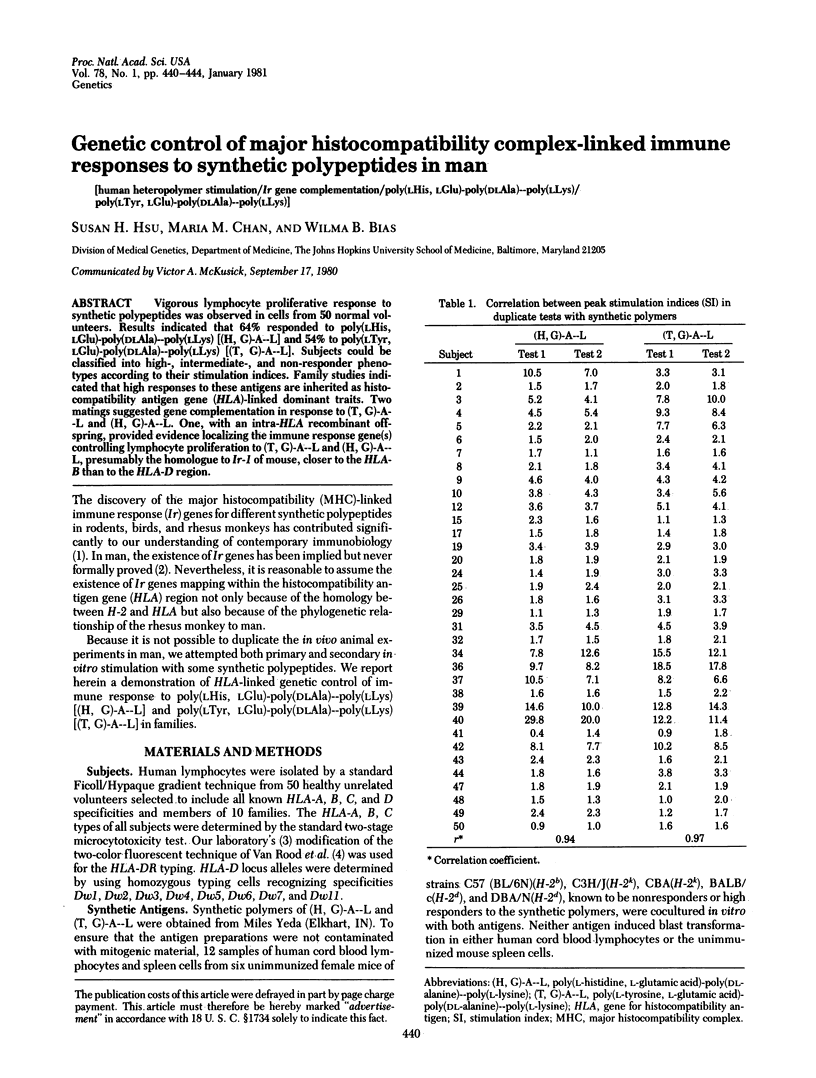
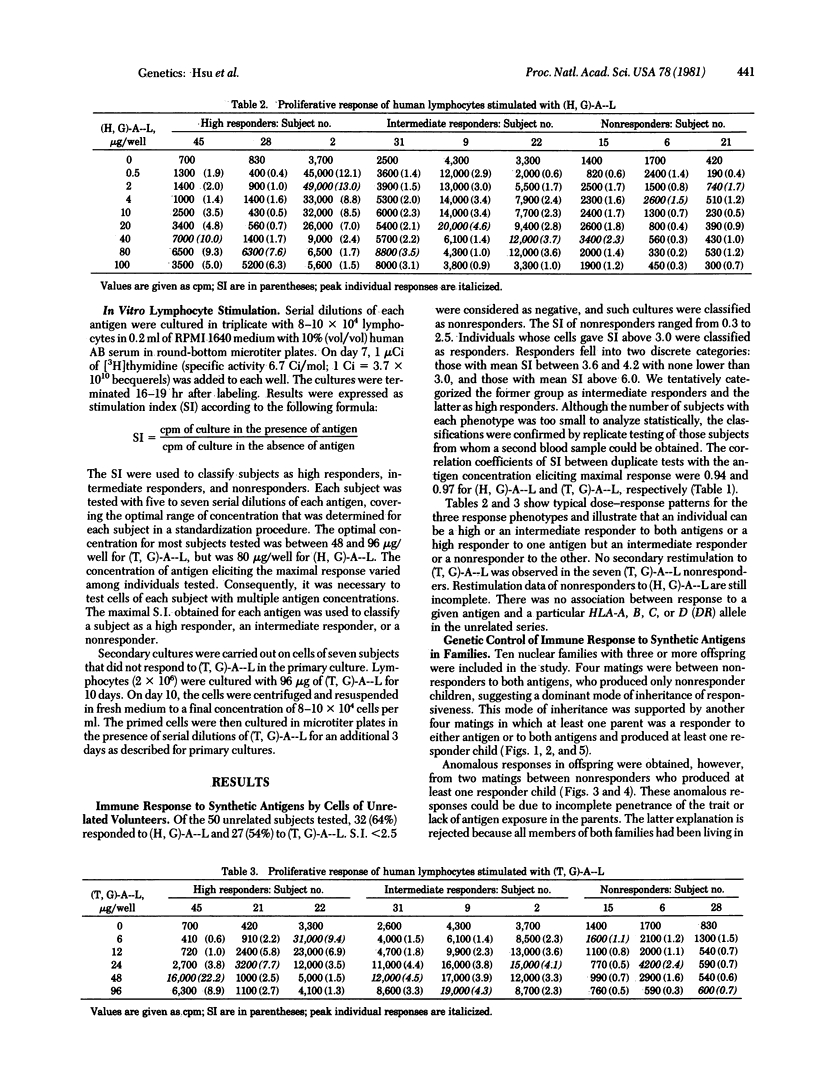
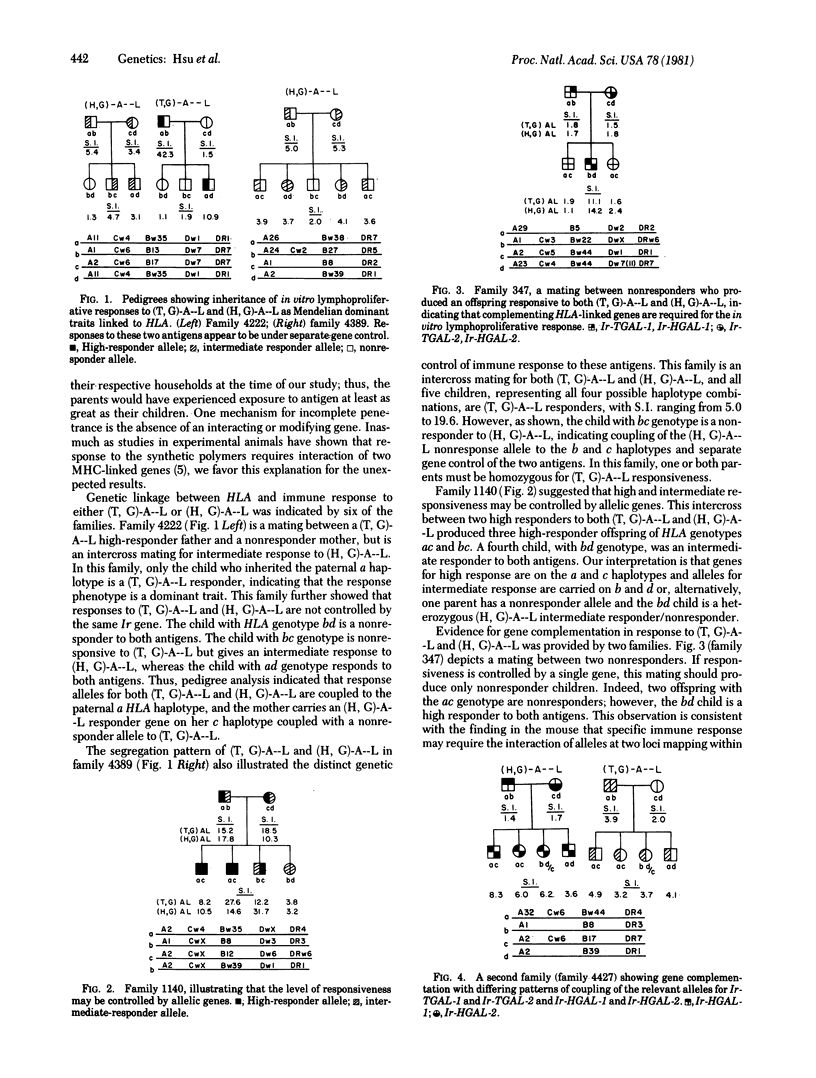
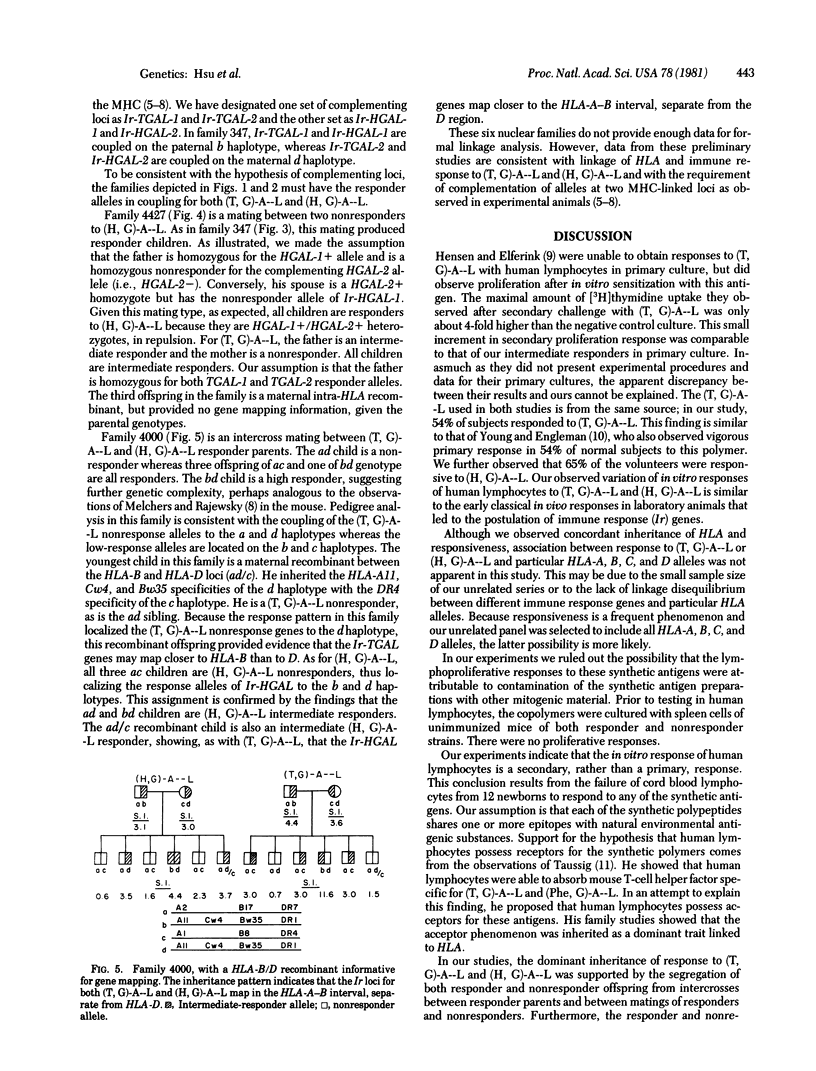
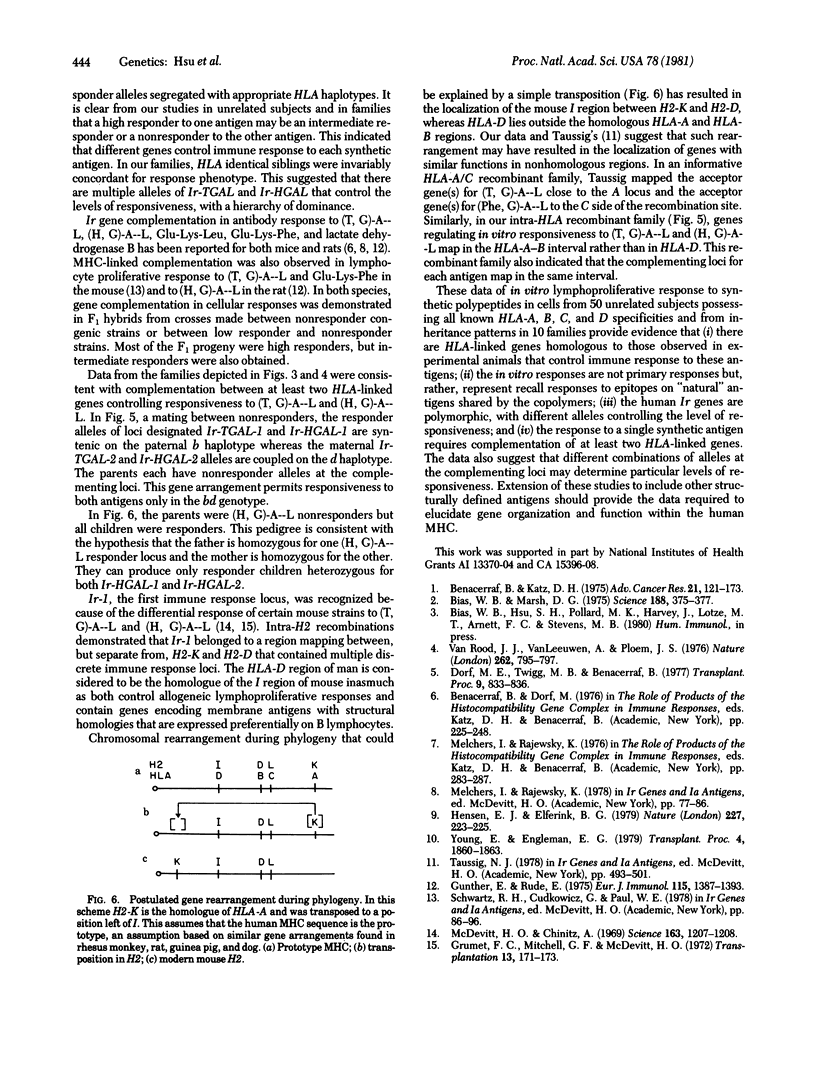
Selected References
These references are in PubMed. This may not be the complete list of references from this article.
- Benacerraf B., Katz D. H. The histocompatibility-linked immune response genes. Adv Cancer Res. 1975;21:121–173. doi: 10.1016/s0065-230x(08)60972-0. [DOI] [PubMed] [Google Scholar]
- Bias W. B., Marsh D. G. HL-A linked antigen E immune response genes: an unproved hypothesis. Science. 1975 Apr 25;188(4186):375–377. doi: 10.1126/science.1118733. [DOI] [PubMed] [Google Scholar]
- Dorf M. E., Twigg M. B., Benacerraf B. Genetic analysis of complementing H-linked Ir genes. Transplant Proc. 1977 Mar;9(1):833–836. [PubMed] [Google Scholar]
- Grumet F. C., McDevitt H. O. Genetic control of the immune response. Relationship between the immune response-1 gene(s) and individual H-2 antigenic specificities. Transplantation. 1972 Feb;13(2):171–173. doi: 10.1097/00007890-197202000-00019. [DOI] [PubMed] [Google Scholar]
- Günther E., Rüde E. Genetic complementation of histocompatibility-linked Ir genes in the rat. J Immunol. 1975 Nov;115(5):1387–1393. [PubMed] [Google Scholar]
- Hensen E. J., Elferink B. G. Primary sensitisation and restimulation of human lymphocytes with soluble antigen in vitro. Nature. 1979 Jan 18;277(5693):223–225. doi: 10.1038/277223a0. [DOI] [PubMed] [Google Scholar]
- McDevitt H. O., Chinitz A. Genetic control of the antibody response: relationship between immune response and histocompatibility (H-2) type. Science. 1969 Mar 14;163(3872):1207–1208. doi: 10.1126/science.163.3872.1207. [DOI] [PubMed] [Google Scholar]
- Young E., Engleman E. G. Human peripheral blood lymphocyte responses to the synthetic antigens (T,G)-A-L and GAT. Transplant Proc. 1979 Dec;11(4):1860–1863. [PubMed] [Google Scholar]
- van Rood J. J., van Leeuwen A., Ploem J. S. Simultaneous detection of two cell populations by two-colour fluorescence and application to the recognition of B-cell determinants. Nature. 1976 Aug 26;262(5571):795–797. doi: 10.1038/262795a0. [DOI] [PubMed] [Google Scholar]


